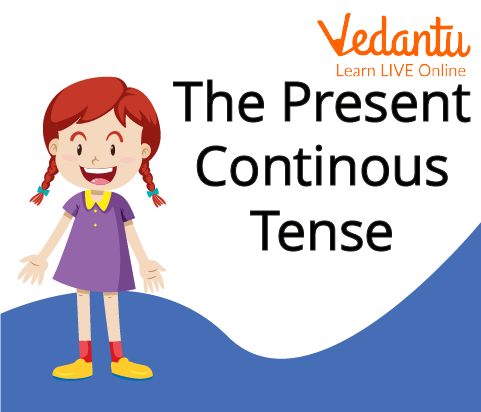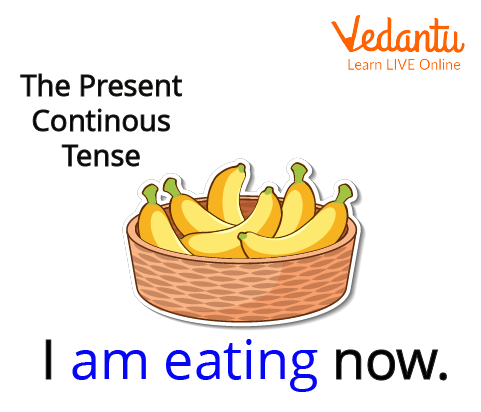An Overview of Class 3 English Grammar Ncert Solutions Present Continuous Tense
FAQs on Class 3 English Grammar Ncert Solutions Present Continuous Tense
1. What is the Present Continuous Tense in English grammar for a Class 3 student?
The Present Continuous Tense describes an action that is happening right now or is currently in progress. It helps us talk about things that have started but have not finished yet. For example, if you say, 'I am reading a book,' it means the action of reading is happening at this moment.
2. What is the basic rule or structure for forming a sentence in the Present Continuous Tense?
To form a sentence in the Present Continuous Tense, you need two main parts. The structure is: Subject + Helping Verb (am/is/are) + Main Verb with '-ing'. For example, in the sentence 'She is playing,' 'She' is the subject, 'is' is the helping verb, and 'playing' is the main verb with '-ing' added.
3. How do we know when to use 'is', 'am', or 'are' in a sentence?
The choice of the helping verb depends on the subject of the sentence. The rules are simple:
- Use 'am' only with the pronoun 'I'. (Example: I am drawing.)
- Use 'is' with singular nouns or pronouns like 'he', 'she', 'it', or a single name. (Example: The dog is barking.)
- Use 'are' with plural nouns or pronouns like 'we', 'you', 'they', or multiple names. (Example: The children are singing.)
4. How can we change a statement into a question using the Present Continuous Tense?
To make a question, you simply move the helping verb (am, is, are) to the beginning of the sentence, before the subject. For example, the statement 'He is sleeping' becomes the question 'Is he sleeping?'. Similarly, 'They are playing' becomes 'Are they playing?'.
5. What is the main difference between the Simple Present Tense and the Present Continuous Tense?
The main difference is about timing and duration. The Simple Present Tense is used for habits, facts, or actions that happen regularly (e.g., 'The sun rises in the east'). In contrast, the Present Continuous Tense is for actions happening at the exact moment of speaking or are ongoing for a temporary period (e.g., 'The children are playing outside now').
6. Why is this tense sometimes called the 'Present Progressive Tense'?
It is also called the Present Progressive Tense because the word 'progressive' means something is moving forward or making progress. This tense shows that an action is in progress and has not yet been completed. So, 'progressive' is just another word to describe an ongoing action.
7. Are there any verbs that we should not use in the Present Continuous Tense?
Yes, some verbs, often called 'stative verbs,' are usually not used in the continuous form because they describe states or feelings, not actions. For a Class 3 student, common examples include verbs like 'love', 'like', 'want', and 'know'. Instead of saying 'I am knowing the answer,' we say 'I know the answer'.
8. What happens if a student forgets to add the helping verb 'is', 'am', or 'are' in a sentence?
Forgetting the helping verb is a common mistake that makes the sentence grammatically incorrect. For instance, 'He playing football' is wrong. The helping verb 'is' is essential to show that the action is happening now. The correct sentence must be 'He is playing football'. The helping verb connects the subject to the ongoing action.



























